Diving
Komodo Island Diving
Book in advance! Price starting from USD 2,890 / pers Check Availability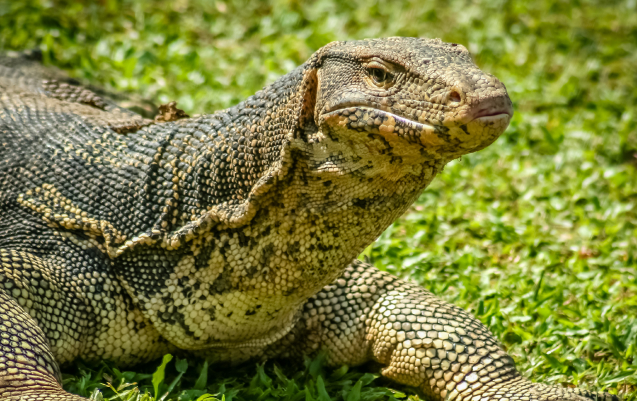
Komodo Island Diving
Explore the hidden treasures of Komodo Island’s underwater realm, a true paradise for scuba enthusiasts from all around the world.
We prepared this in-depth guide to provide an overview of Komodo Island diving, from top-notch dive sites and rich marine life to the essential logistics and best practices for a successful dive trip in Komodo.
Komodo National Park
Discover the breathtaking wonders of Komodo National Park, a captivating UNESCO World Heritage site nestled in the heart of Indonesia. This enchanting destination comprises three stunning islands: Padar, Komodo, and Rinca, along with a myriad of smaller islands that together form an idyllic haven for nature enthusiasts and adventurers alike.
For diving aficionados, diving in Komodo National Park is an absolute paradise. Immerse yourself in the crystal-clear waters that surround the park’s islands and be mesmerized by the kaleidoscope of vibrant coral reefs teeming with an extraordinary array of marine life. Whether you’re a novice seeking your first underwater exploration or an experienced diver craving a new challenge, the park offers an abundance of awe-inspiring sights to discover on your next diving komodo expedition.
Prepare to be spellbound as you encounter magnificent manta rays gliding gracefully through the depths, and witness the spectacle of colorful schools of fish weaving in and out of the intricate coral formations. The park’s unparalleled biodiversity will leave you breathless, offering you a rare opportunity to witness captivating underwater landscapes and encounter fascinating marine creatures that will forever etch themselves into your memory.
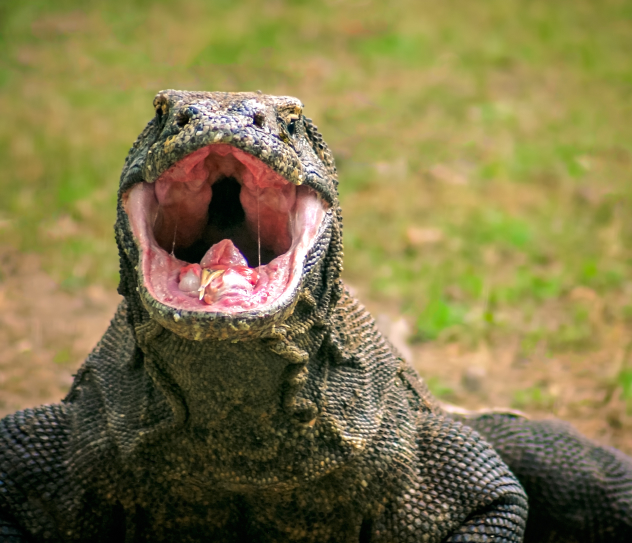
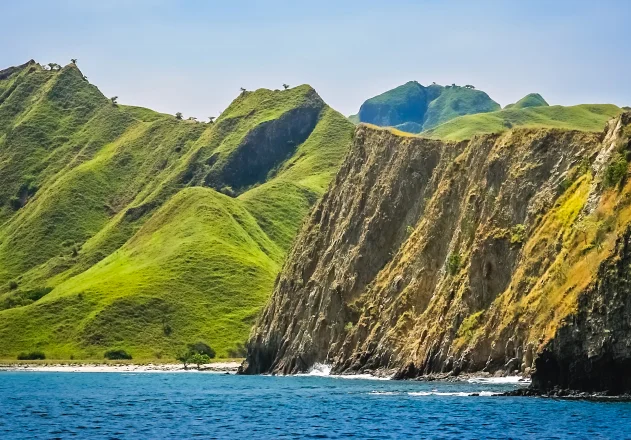
The Wonders of Komodo National Park
While the Komodo dragon steals the spotlight as the park’s main attraction, it is merely the tip of the iceberg. As you venture beyond the shores, you’ll uncover a tapestry of diverse ecosystems, ranging from lush tropical forests to expansive savannas and mesmerizing coral reefs. This incredible range of habitats sustains an astonishing variety of wildlife, including several endangered species, making Komodo National Park an essential destination for those seeking to immerse themselves in nature’s breathtaking beauty.
Embark on a journey to Komodo National Park and unlock the door to an enchanting realm where adventure, wonder, and discovery seamlessly intertwine. This is your chance to witness the majestic Komodo dragons in their natural habitat while embracing the abundance of life that flourishes within this ecological gem. Prepare to be captivated, for Komodo National Park is a destination that will leave an indelible mark on your soul.
Komodo National Park's Underwater Adventure
Experience the wonders of Komodo National Park and its breathtaking Komodo Islands, a true paradise for nature lovers and adventure seekers. Immerse yourself in crystal-clear waters brimming with vibrant coral reefs, dazzling fish, and captivating marine creatures. Snorkeling and diving enthusiasts can’t resist the allure of exploring the mesmerizing underwater realm, making it a sought-after destination.
But that’s not all. Komodo National Park offers a plethora of activities to cater to every visitor’s desires. Embark on thrilling hikes through rugged landscapes, treating your senses to awe-inspiring vistas and encounters with diverse flora and fauna. Witness monkeys swinging through trees, graceful deer roaming freely, and exotic bird species soaring above.
Brace yourself for an adrenaline-pumping adventure that awaits beneath the surface as diving enthusiasts delve into a vibrant world adorned with colorful coral reefs and captivating marine life. Unforgettable memories are just a dive away.
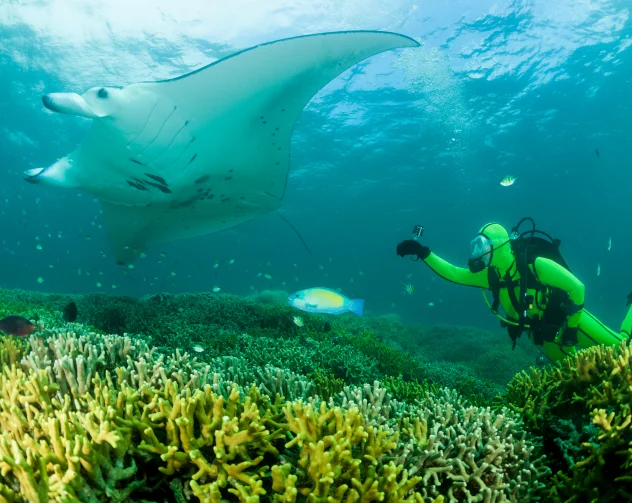
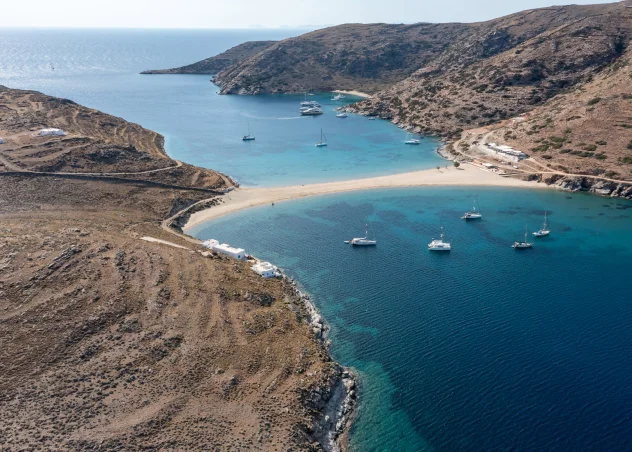
Safeguarding the Natural Majesty of Komodo National Park
While the Komodo dragon steals the spotlight as the park’s main attraction, it is merely the tip of the iceberg. As you venture beyond the shores, you’ll uncover a tapestry of diverse ecosystems, ranging from lush tropical forests to expansive savannas and mesmerizing coral reefs. This incredible range of habitats sustains an astonishing variety of wildlife, including several endangered species, making Komodo National Park an essential destination for those seeking to immerse themselves in nature’s breathtaking beauty.
Embark on a journey to Komodo National Park and unlock the door to an enchanting realm where adventure, wonder, and discovery seamlessly intertwine. This is your chance to witness the majestic Komodo dragons in their natural habitat while embracing the abundance of life that flourishes within this ecological gem. Prepare to be captivated, for Komodo National Park is a destination that will leave an indelible mark on your soul.
The Heritage and Conservation of Komodo National Park
The indigenous people, known as the Komodo, have lived in harmony with the dragons for centuries and continue to maintain their traditional way of life. Their culture and traditions, which include diving Komodo, add a fascinating dimension to the overall experience of visiting the park, offering visitors a chance to learn about the area’s rich heritage.
Ongoing scientific research and monitoring efforts are being conducted within the park to deepen our understanding of the unique ecosystems and the species that inhabit them. This research contributes to our knowledge of biodiversity conservation and helps develop sustainable practices to protect and manage similar ecosystems worldwide.
Komodo National Park stands as a testament to the beauty and resilience of nature, offering a glimpse into a world that is both awe-inspiring and fragile. As visitors explore the park’s diverse landscapes and encounter its iconic creatures, they become part of a collective effort to ensure the continued existence of this remarkable place for generations to come.
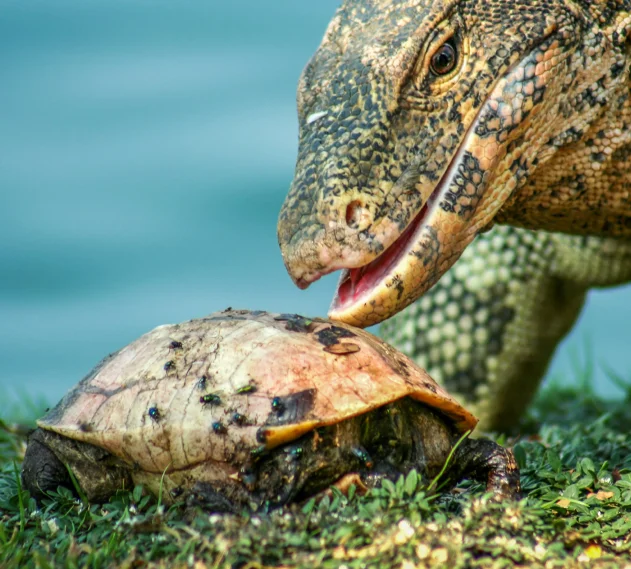
PADI Course
PADI (Professional Association of Diving Instructors) courses are designed to provide individuals, including beginner divers, with the necessary skills and knowledge to explore the fascinating world of scuba diving, including world-class diving experiences. These courses offer a structured approach to learning and cater to divers of all levels, from beginners to advanced enthusiasts.
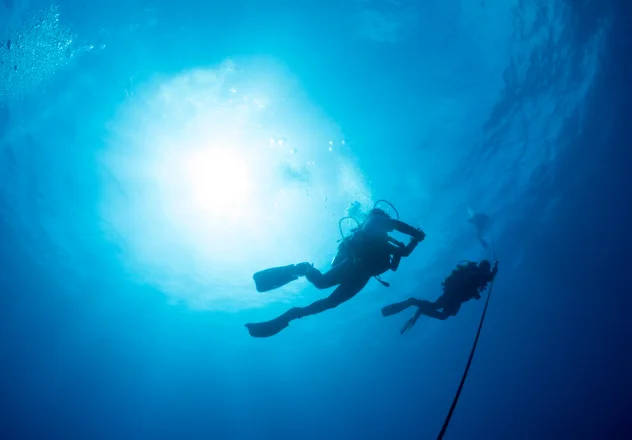
PADI's Curriculum for Responsible World-Class Diving
The PADI curriculum covers various topics, including diving theory, equipment usage, underwater navigation, safety protocols, and environmental awareness, ensuring that divers are well-prepared for world-class diving adventures. PADI courses, led by experienced dive operators who serve as dive guides, not only focus on individual skills but also emphasize the importance of responsible diving practices.
Students learn about the fragility of marine ecosystems and the need for conservation efforts to protect underwater environments, ensuring an enjoyable diving experience. By promoting environmental awareness, PADI courses instill a sense of responsibility among divers, encouraging them to become ambassadors for preserving our oceans.
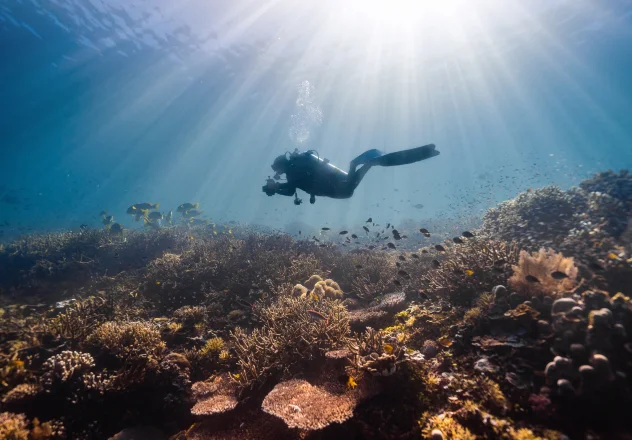
PADI's Dive Education for Ocean Stewardship and Skill Mastery
PADI courses, led by experienced dive operator who serve as dive guides, not only focus on individual skills but also emphasize the importance of responsible diving practices.
Students learn about the fragility of marine ecosystems and the need for conservation efforts to protect underwater environments, ensuring an enjoyable diving experience.
By promoting environmental awareness, PADI courses instill a sense of responsibility among divers, encouraging them to become ambassadors for preserving our oceans.
Courses provide a structured and comprehensive approach to scuba diving education, guided by experienced dive instructors. Whether you’re a novice diver looking to explore the underwater realm for the first time or an experienced diver seeking to enhance your skills, these courses, with the help of dive guides, offer a pathway to becoming a confident and knowledgeable diver while promoting environmental stewardship.
5 Outstanding Dive Sites in Komodo Island
Komodo Island, located in Indonesia’s Lesser Sunda Islands, offers an array of great dive sites that captivate divers worldwide. The crystal-clear waters surrounding this magnificent island are home to vibrant coral reefs, diverse marine life, and breathtaking underwater landscapes.
Five outstanding dive sites in Komodo Island include the world-renowned Batu Bolong, where massive schools of clown fish and stunning coral formations abound; Crystal Rock, with its impressive underwater pinnacle and thrilling currents; Castle Rock, mesmerizes with its teeming marine biodiversity, including the magnificent Napoleon wrasse; Manta Point, where majestic manta ray gracefully glide through the water, and Tatawa Besar, a paradise for macro photography enthusiasts with its astonishing array of critters, including the elusive crocodile fish.
Exploring these dive sites is an unforgettable experience that showcases the awe-inspiring beauty of the underwater world on Komodo Island.
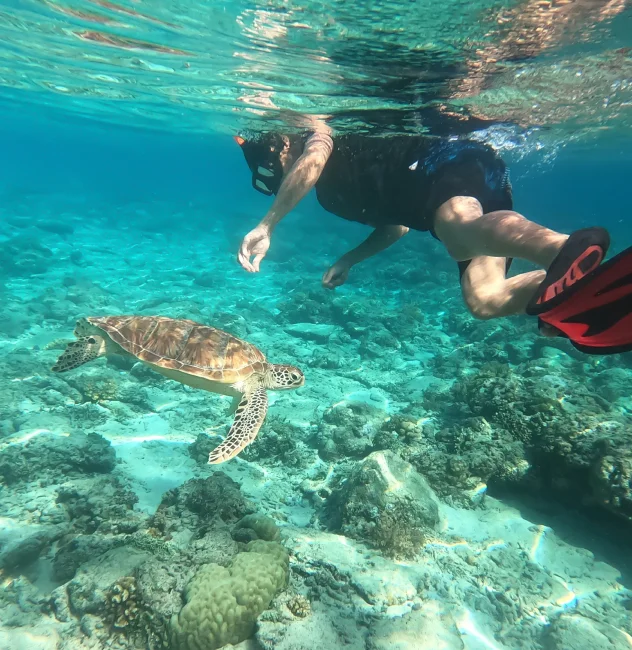
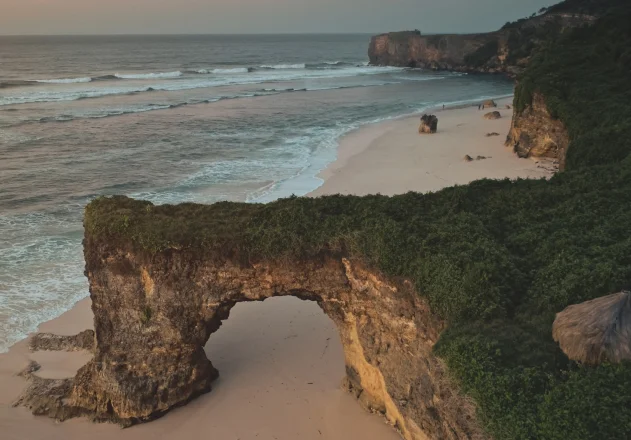
Batu Bolong
Batu Bolong, also known in Indonesian as “Hollow Rock,” is the most famous dive site, offering exceptional experiences both during the day and for night dive. This underwater pinnacle, known for its exceptional drift diving experience, is pierced by a slight hollow and is full of vibrant, healthy soft corals, housing a world of marine species. Located in the heart of South Komodo, it is genuinely a great dive site near komodo and rinca islands that captivates divers with its beauty, biodiversity, and the exhilarating thrill of drift diving along its currents.
Due to its strong currents, it’s more suited to experienced divers, such as advanced certified divers with at least 30-40 logged dives.
The currents in Batu Bolong can change rapidly, making diving at this dive site closely tied to moon cycles and tides. Diving at Batu Bolong, a popular dive destinations for scuba divers, requires careful planning and consideration of the moon cycles and tides due to the ever-changing currents. The strong currents flowing through the hollow create an exhilarating and challenging dive experience known as “drift dives,” attracting thrill-seeking scuba divers worldwide.
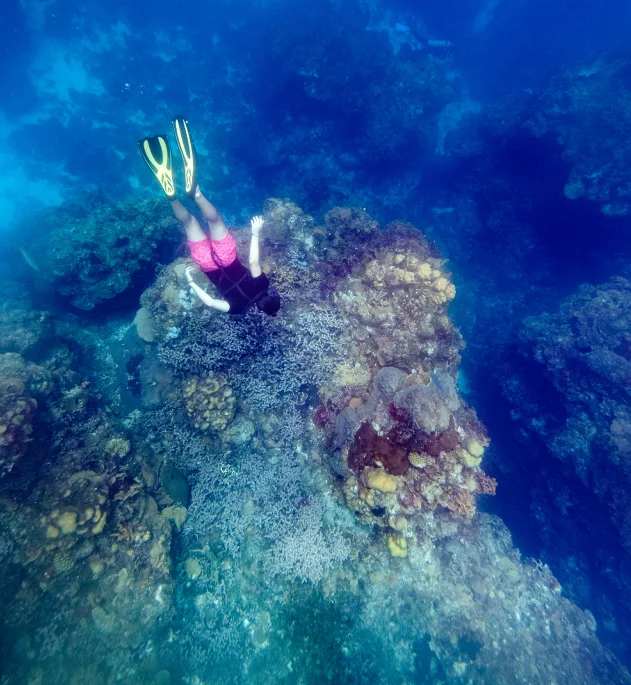
The Thrill of Drift Diving at Batu Bolong's Marine Paradise
These drift dives allow divers to effortlessly glide along with the currents, experiencing an exhilarating sense of weightlessness as they explore the underwater wonders. The currents not only provide an adrenaline-pumping adventure but also bring a constant supply of nutrients, resulting in an abundance of marine life. It makes the hollow an ideal destination for scuba divers seeking excitement and the opportunity to witness vibrant marine ecosystems up close.
Exploring Batu Bolong’s underwater realm reveals a mesmerizing display of marine biodiversity. Divers can expect to encounter schools of colorful reef fish, such as surgeonfish, butterflyfish, and angelfish, darting through the vibrant healthy coral coral gardens. The site is also known for its larger inhabitants, including reef sharks, manta ray, and even the occasional turtle.
Additionally, the magnificent Napoleon wrasse, with its distinctive humphead and vibrant markings, can be spotted gracefully navigating the waters alongside other marine creatures. The dramatic topography of the pinnacle, with its overhangs and crevices, provides shelter for various species of crustaceans, octopuses, and moray eels.
Batu Bolong’s unique characteristics and rich marine ecosystem make it a must-visit destination for experienced divers seeking an unforgettable underwater adventure. The combination of challenging currents, diverse marine life, and stunning coral formations create a dive site that captures the hearts of underwater enthusiasts and showcases the natural beauty of Batu Bolong’s unique characteristics, coupled with its rich marine ecosystem, make it a must-visit destination for experienced divers seeking an unforgettable underwater adventure.
Manta Point
For lovers of significant marine life, night dives at this dive site and cleaning station in South Komodo offer a unique opportunity to witness the enchanting world of majestic manta rays. These nocturnal encounters provide divers with a rare and captivating experience, allowing them to observe these graceful creatures up close in the darkness of the ocean. Encounters with mantas during night dives are a definite highlight at this Komodo dive site.
Typically a drift dive, divers of almost all experiences can enjoy this dive site. This site is also one of many for an encounter with the Mantas. Mawan and Manta Alley are two top-rated Manta dive sites in Komodo.
It is renowned for its thriving ecosystem and crystal-clear waters, providing an ideal setting for underwater photography enthusiasts. The impressive visibility allows divers to capture breathtaking images of the magnificent manta rays as they gracefully glide through the water. The opportunity to document these gentle giants in their natural habitat is a dream come true for many photographers and nature enthusiasts.
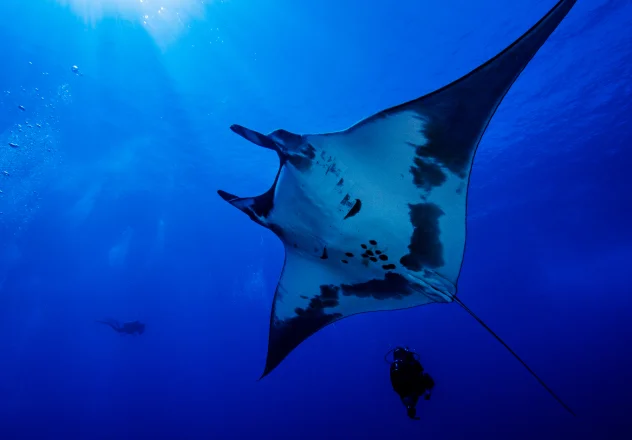
Unveiling the Underwater Spectacle of Manta Point's Dive Sites
Divers can expect to encounter schools of colorful reef fish, reef sharks, sea turtles, and various species of coral. The site’s diverse marine biodiversity ensures that each dive is a unique and captivating experience. Whether you’re an experienced diver seeking an adrenaline-pumping drift dive or a beginner looking for a memorable introduction to the underwater world, it offers an extraordinary adventure for all levels of diving expertise.
Its stunning underwater landscapes and the opportunity to witness the mesmerizing dance of manta rays have solidified its reputation as a must-visit dive site in Komodo. Whether you choose to explore Mawan, Manta Alley, or embark on a thrilling night dive, you’ll be immersed in a world of natural wonder. Here, these graceful creatures steal the show, and every dive promises to be an unforgettable journey into the heart of the ocean’s beauty.
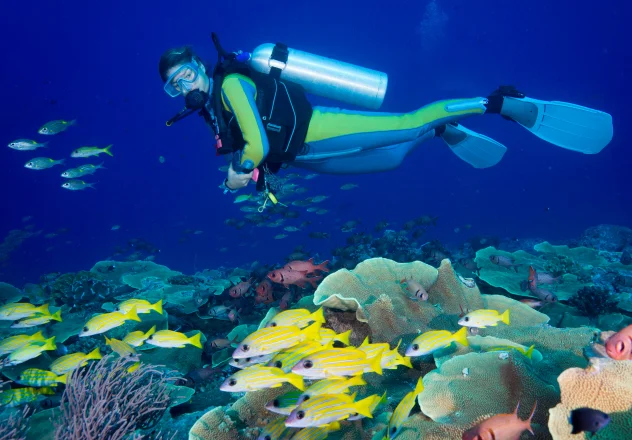
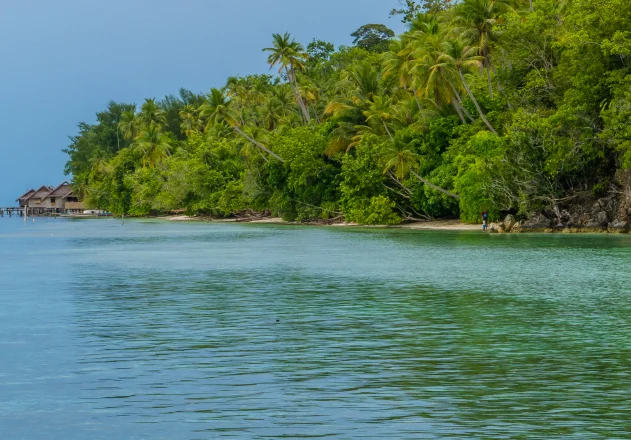
Cannibal Rock
Renowned for its abundant macro life, Cannibal Rock in south Komodo is a macro photographer’s dream. This dive site, nestled in the southern part of the Komodo National Park, is populated with critters like nudibranchs, frogfish, and pygmy seahorses. Its colorful coral landscape adds to the spectacular diving experience.
Cannibal Rock’s coral landscape is a breathtaking sight to behold. Vibrant corals in various shapes and sizes cover the underwater terrain, creating a stunning backdrop for divers exploring the site.
The corals provide a haven for an array of marine life, attracting diverse species. Snorkelers and scuba divers can witness the mesmerizing dance of colorful fish weaving in and out of the corals, creating a vibrant and lively underwater ecosystem.
Castle Rock
One of the main northern dive sites in Komodo National Park, is an underwater mound that captivates divers with its abundance of marine life. Thanks to its nutrient-rich waters, this renowned site attracts large schools of fish, such as fusiliers, trevallies, and white-tip reef sharks. The inclusion of among the northern dive sites further enhances the already diverse and captivating diving experience on Komodo Island.
This is a dive site where you can hook onto a rock in the right currents and enjoy watching the extensive marine life hunting. Like its neighbor Crystal Rock, is two dive sites suitable exclusively for advanced divers.
The unique topography creates an exhilarating diving experience. The site features a pinnacle that rises from the depths, covered in colorful corals and sea fans. As divers descend, they are greeted by an array of marine creatures that call this underwater oasis home.
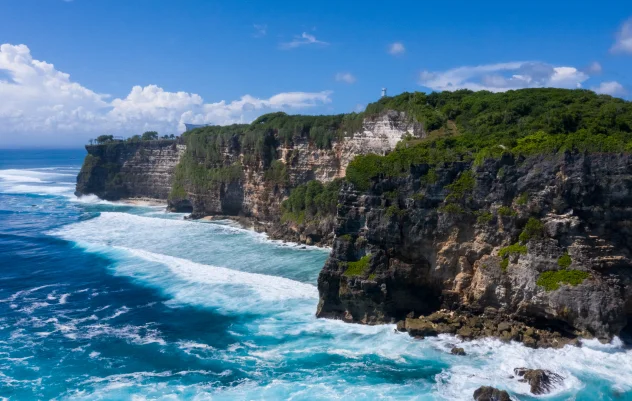
Diving with Pelagics in the Nutrient-Rich Waters of Castle Rock
The strong currents that flow around bring in abundant nutrients, attracting larger pelagic species such as manta rays and eagle rays. Divers can witness these majestic creatures gliding through the water, creating a truly awe-inspiring sight.
It offers divers the opportunity to observe the intricate dynamics of the marine ecosystem. As predators and prey interact in this underwater realm, divers can witness the thrilling spectacle of hunting scenes. Schools of fusiliers and trevallies dart around, evading the pursuit of white-tip reef sharks.
The ability to hook onto the rock and observe these interactions from a vantage point adds an extra layer of excitement and immersion to the diving experience. It is a destination that truly captivates the hearts of adventure-seeking divers who crave a thrilling and unique underwater encounter.
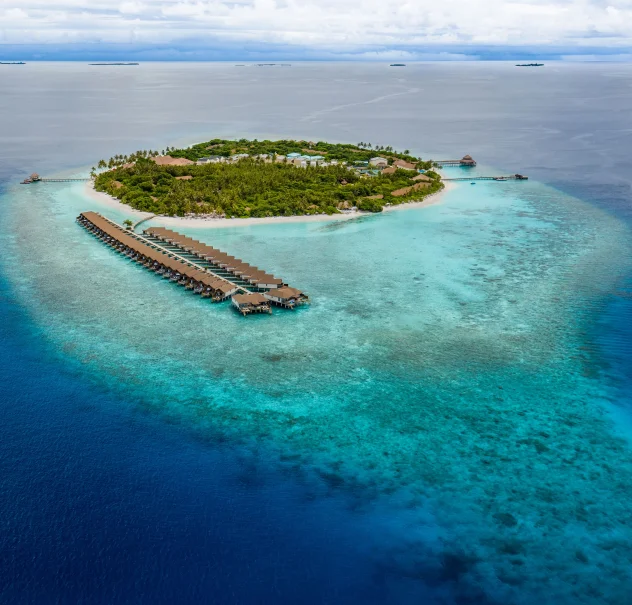
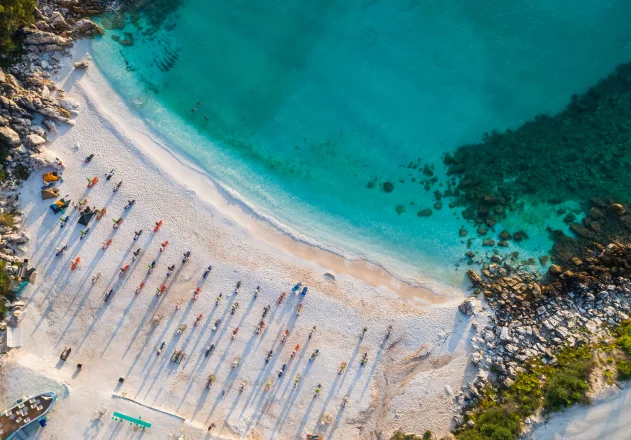
Tatawa Besar
Tatawa Besar, with its gentle currents and vibrant coral gardens, is perfect for novice divers or those seeking a more relaxed south Komodo Island diving experience. Expect encounters with sea turtles, giant trevallies, and a plethora of colorful reef fish.
The coral reef here is simply stunning, and although it’s typically a drift dive, currents are most often mild.
Diving in Tatawa Besar provides a unique opportunity to explore a thriving marine ecosystem. The coral reef formations are diverse and pristine, showcasing an array of hard and soft corals in vibrant hues. As you descend into the crystal-clear waters, you’ll be greeted by a kaleidoscope of marine life, including the elusive crocodile fish. Schools of tropical fish gracefully navigate through the corals, creating a mesmerizing spectacle of colors.
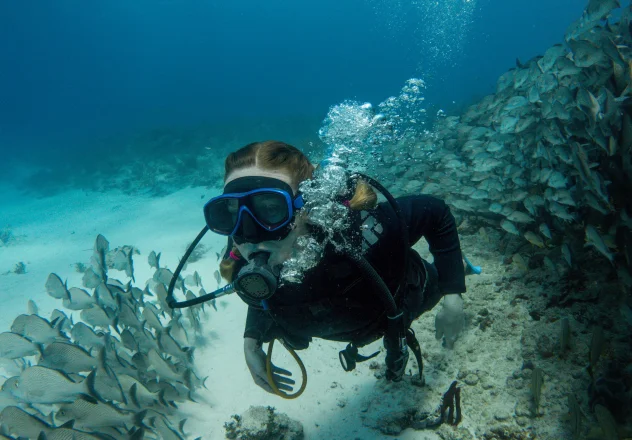
The Underwater Splendor of Tatawa Besar
From tiny clownfish darting in and out of anemones to majestic manta rays gracefully gliding through the water, Tatawa Besar offers a rich biodiversity that will leave any diver in awe. One of the remarkable aspects of Tatawa Besar is its typically mild currents, making it an ideal location for less experienced divers or those who prefer a more leisurely exploration. The gentle drift allows divers to effortlessly glide along the reef, taking in the breathtaking sights at a comfortable pace.
Underwater photographers will find plenty of opportunities to capture stunning shots of marine life and coral formations. Whether you choose to snorkel or scuba dive, Tatawa Besar promises an unforgettable underwater adventure filled with beauty, tranquility and an abundance of marine wonders.
The beautiful marine life and vibrant coral reef make it an enchanting destination for photographers seeking to capture the magic of the underwater world.
With its tranquil currents and stunning biodiversity, Tatawa Besar offers an immersive experience for nature enthusiasts of all levels. Whether you are a beginner or an experienced diver, the marine ecosystem of Tatawa Besar will captivate you with its vibrant colors and bustling marine life.
Dive into the waters of Tatawa Besar and prepare to be mesmerized by the wonders that await beneath the surface.
Rinca Island
Rinca Island, located in Indonesia, is a mesmerizing destination that captivates visitors with its untouched natural beauty and intriguing wildlife. As one of the few remaining habitats of the iconic Komodo dragon, the world’s largest living lizard species, Rinca Island offers an extraordinary opportunity to observe these ancient creatures in their natural habitat.
The island’s rugged terrain, encompassing lush forests, rolling hills, and stunning coastal cliffs, creates a picturesque backdrop for wildlife enthusiasts and nature lovers alike.
Embarking on a trek through the island’s diverse landscapes, visitors can encounter the awe-inspiring Komodo dragon and an array of other fascinating wildlife, including deer, monkeys, and various bird species.
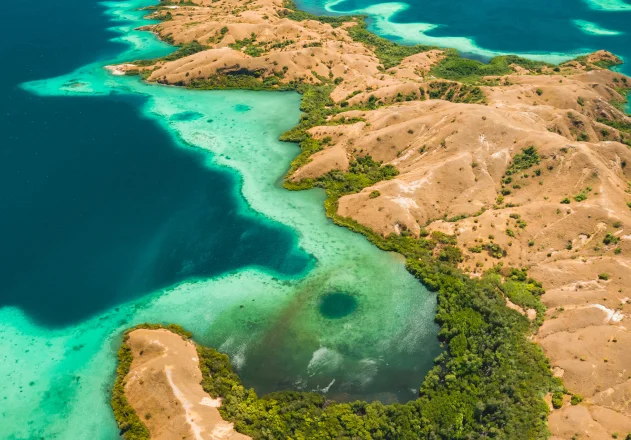
A Fusion of Land and Sea in Indonesia's Untamed Wilderness
The rich marine ecosystem surrounding Rinca Island further adds to its allure, offering exceptional liveaboard diving, diving, and snorkeling experiences amidst colorful coral reefs and an abundance of marine life.
Whether it’s the thrill of encountering prehistoric reptiles, exploring breathtaking landscapes, or immersing oneself in the wonders of the underwater world, this Indonesian gem promises an unforgettable adventure for those who venture to this extraordinary destination. With its untamed beauty and diverse wildlife, it is a haven for nature enthusiasts seeking an immersive and captivating experience.


Journey to Komodo Island
Journeying to Komodo Island is an awe-inspiring experience that immerses visitors in the incredible beauty of nature. As you approach the island, the clear turquoise waters reveal a vibrant underwater world teeming with colorful coral reefs and exotic marine life.
Snorkeling or diving in these pristine waters offers a rare opportunity to swim alongside magnificent sea turtles, graceful manta rays, and an array of tropical fish. The coral gardens, with their intricate formations, create a surreal backdrop that transports you to a different realm. Exploring the depths of Komodo’s marine ecosystem is like entering a hidden paradise, where time seems to stand still, and every moment is filled with wonder. Aside from its underwater wonders, Komodo Island is known for its breathtaking landscapes and rugged terrain. Trekking through its lush forests and jagged hills reveals a diversity of flora and fauna that is simply astonishing. You might encounter Komodo dragons, the island’s iconic inhabitants, as you navigate the trails.
These ancient reptiles, with their formidable size and prehistoric appearance, evoke a sense of wonder and respect. Observing them in their natural habitat is a humbling experience, reminding us of the incredible diversity of life on Earth and the need for its preservation.
With every step, the journey offers a glimpse into the natural world’s raw power and untouched beauty, leaving visitors with memories that will last a lifetime.
Flights to Labuan Bajo
Labuan Bajo, located on the island of Flores, is the main entry point for anyone planning a Komodo Island diving trip. It’s well-connected with regular flights from Bali and Jakarta, ensuring a convenient journey.
From Bali, travelers will find several flights that reach Labuan Bajo with different airlines such as: AirAsia, Garuda, Citilink, Batik or Lion Air.
Travel Tip: Keep a close eye to your flight because Indonesian airlines are notorious for last minute cancellations.From Bali to Labuan Bajo it’s a short and comfortable 45 minutes flight. This gives Bali travelers a new destination that they can tie to their holiday.
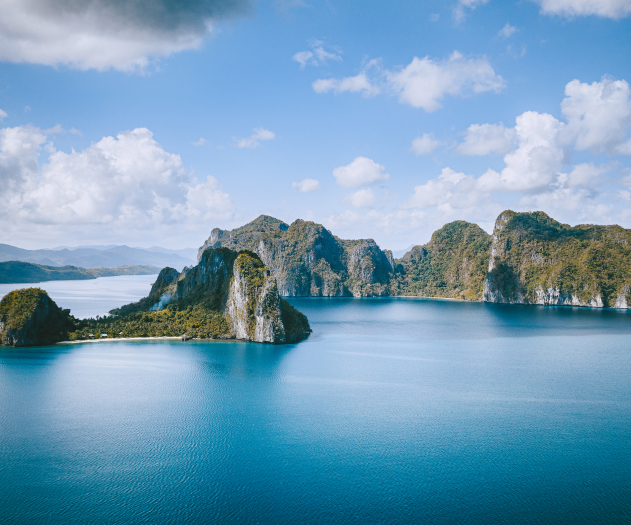

Labuan Bajo
Known as the gateway to the world-famous Komodo National Park, it has quickly gained popularity among travelers and adventurers. The town is nestled in a picturesque bay, surrounded by lush green hills and crystal-clear turquoise waters, offering breathtaking views at every turn.
One of the main attractions is its proximity to the Komodo National Park, home to the ancient Komodo dragons, the world’s most giant lizards. Visitors can embark on boat trips to explore the park, witnessing the impressive Komodo dragons in their natural habitat.
The park also boasts stunning coral reefs, making it a paradise for diving and snorkeling enthusiasts. The underwater world is teeming with colorful marine life, including manta ray, turtles, and an array of tropical fish. Labuan Bajo offers a range of amenities and facilities for tourists. The town has seen rapid development in recent years, with an influx of hotels, resorts, and restaurants catering to the growing number of visitors. Travelers can indulge in delicious seafood, experience vibrant local markets, and enjoy the lively nightlife scene. Labuan Bajo is also a great starting point for exploring other attractions in Flores, such as the traditional villages, stunning waterfalls, and beautiful rice terraces.
The stunning natural beauty of this destination, coupled with its accessibility to the Komodo National Park, makes it a must-visit for nature lovers and adventure seekers. Whether you’re exploring the park, diving into the vibrant underwater world, or simply soaking in the breathtaking views, Labuan Bajo promises an unforgettable experience for all who visit.
Ferry and Speedboat Services
From Labuan Bajo, a ferry, speedboat, or dive boats can whisk you away to Komodo Island. Ideally, you should book your activities in the Komodo National Park with a reputable operator, such as one of the dive centers or dive boat operators in Labuan Bajo. The resorts and hotels also provide scuba diving trips and excursions in the park.
See, for example, the already famous
Komodo Resort
placed on Sebayur island, right in the heart of Komodo Park.
The availability of ferry, speedboat, and dive boat services makes it convenient for travelers to explore the breathtaking beauty of Komodo National Park. Whether you prefer a leisurely ferry ride, a faster speedboat journey, or an immersive dive boat experience, these transportation options offer a hassle-free way to reach the iconic Komodo Island.
Booking your activities with a reputable operator is highly recommended. These operators are well-equipped to provide guided tours and diving experiences within the Komodo National Park. They can arrange various activities, including snorkeling, hiking, and wildlife spotting, ensuring that your visit to Komodo Island is filled with unforgettable adventures.
The resorts and hotels cater to travelers seeking scuba diving trips and excursions in the park. For instance, the renowned Komodo Resort on Sebayur Island offers a prime location in the heart of the Komodo National Park. This allows guests to enjoy easy access to the park’s mesmerizing dive sites and stunning natural wonders. Whether you’re a seasoned diver or a beginner, these accommodations provide a comfortable and immersive experience for exploring Komodo Island and its surrounding waters.
.jpg)
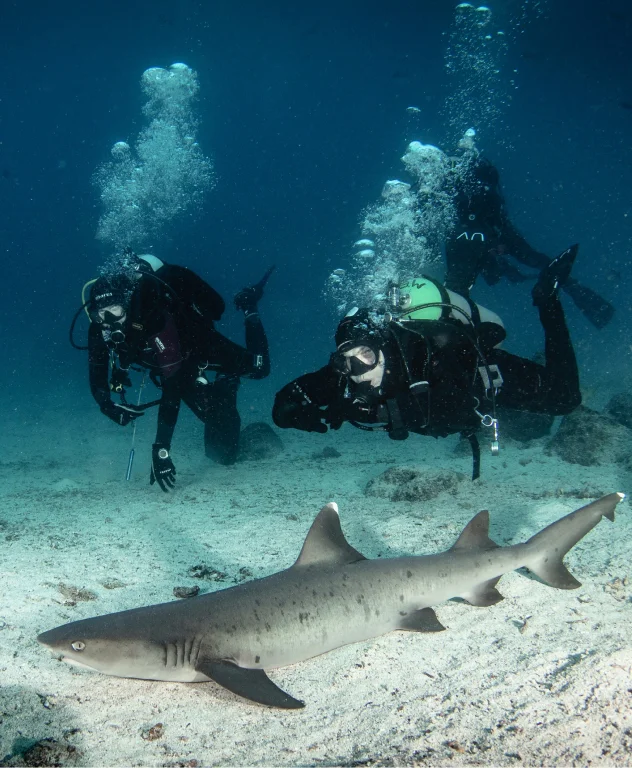
Liveaboard Diving Excursions
The best way to explore diving on Komodo Island is with a liveaboard like ours: Neptune One or Komodo Sea Dragon. With Neptune One, Komodo Sea Dragon, or a Komodo liveaboard dive guide, you’ll have the opportunity to embark on an unforgettable liveaboard trip and explore a variety of best dive sites that are otherwise difficult to reach on day trips. These boats are specially equipped to cater to divers’ needs, providing a comfortable and convenient base for underwater adventures during the liveaboard trip. These trips allow you to stay on a terrific liveaboard destination, a comfortable, specially equipped boat with a dive guide for several days, providing you with access to a wide range of best dive sites that are often unreachable on day trips.
You can dive with a dive guide during the day and relax under the stars at night, making it a unique way to experience the diving scene on Komodo Island. During the day, you can embark on a Komodo liveaboard diving adventure, diving into the crystal-clear waters teeming with vibrant marine life, including pristine coral reefs, schools of tropical fish, and even encounters with grey reef sharks. With the guidance of experienced dive masters and instructors, you can discover hidden gems and secret spots that offer awe-inspiring underwater landscapes.
In the evening, after a day of exhilarating dives guided by a knowledgeable dive guide, you can unwind and relax under the beautiful night sky. Imagine sitting on the deck of the liveaboard, surrounded by the tranquility of the ocean, as you gaze at the stars above. It’s a perfect time to share stories and connect with fellow divers, creating lasting memories and friendships. Excursions offer a unique and unforgettable way to experience Komodo Island’s diving scene. With the freedom and flexibility that comes with staying on a liveaboard, you can fully immerse yourself in the beauty of the underwater world while enjoying the comfort and convenience of a well-equipped vessel.
Timing Your Komodo Island Diving Trip
The best time for diving in Komodo largely depends on what you want to see. Manta ray are present all year round, but their numbers peak during the rainy season (December to February). Unfortunately, most of the luxurious or the best liveaboards in Komodo, including dive boats, will not be there during the rainy season. They will be in Raja Ampat. But you will be able to find local operators, including dive boats, that will take you where you want to go or you can stay with Komodo Resort and enjoy the best of the diving.
For calmer seas and better visibility, the dry season (April to November) is ideal.
If you are planning to join Komodo Island diving with us, take a look at our
schedule.
.jpg)
Frequently Ask Question
Everything you need to know about the product and billing. Can’t find the answer you’re looking for? Please chat to our friendly team.
See More FAQs